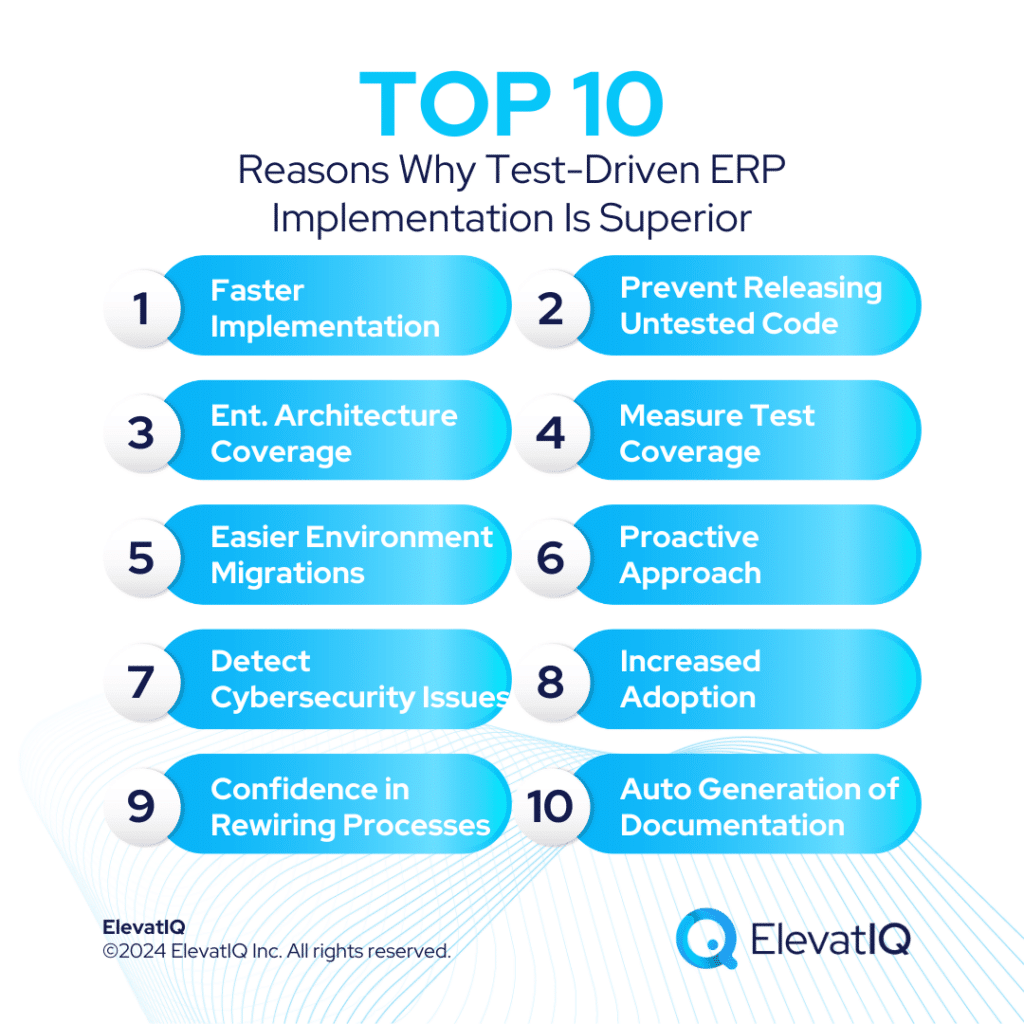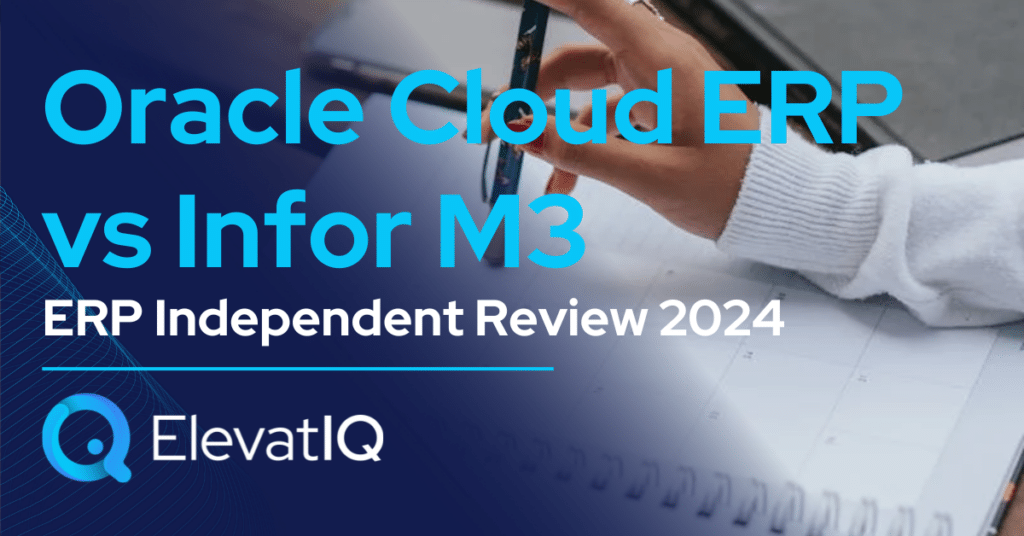Last Updated on March 17, 2025 by Sam Gupta
Before we touch on why test-driven ERP implementation is superior, let’s do a quick recap on software testing. First, who likes to rehearse? No one. Practice is boring, regardless of whether you talk about stage performance or ERP implementations. Understanding the importance of testing is even more difficult unless you test for living. That’s probably the reason why software development teams have a dedicated role in quality assurance. These professionals go through years of training to master the art of identifying boundary scenarios in order to catch the issues before they cause disruptions.
When professionals need so much training, how would you expect an average ERP user without training to test with similar expertise? Sure, consultants might help them document the test cases, but the users often end up not testing (or not testing enough). Because? They might not have the same level of appreciation for testing. And for these reasons, poor testing is the major cause of ERP disruptions. The examples of such disruptions? In the post-implementation phase, the system would not behave as per users’ expectations.

The issues could be as minor as struggling to log in. Not being able to print the forms. Or being unable to complete the transactions. Most of these issues exist due to the lack of testing. And this is where automated testing can really help. Why? Because it reduces the workload for users by helping with the testing in an automated manner. It not only helps ensure the test coverage but also validates how thoroughly users have tested the system. This is why you need test-driven ERP implementation. And the following reasons will help you understand its benefits.

10. Auto Generation of Test and Test Results in Documentation Easier
One major challenge with cross-functional ERP test cases is that documenting them is extremely challenging. Primarily because? They have many different steps with hundreds of prerequisites. Equally challenging is identifying the right test cases to ensure sufficient coverage.
This is where the automated testing tools can help generate test case documentation and validate the coverage from the platform itself. They have these capabilities built as part of the platform. Debugging and tracing the coverage is easier as well. While even the automated testing tools would require organizational skills, the framework helps them stay on track. As well as offering good quality documentation friendly for business users (who might not have as deep testing background).

9. Be Confident in Rewiring the Processes
Without an automated test stub, refactoring is always the most frightening experience. Because? What if you forget a few scenarios? Each refactoring may require retesting every single scenario. The reason? Because it’s hard to predict what may break.
With ERP systems, even a minor configuration change, such as pricing or UoM, may have implications in hundreds of places.
The test-driven approach allows you to test right after each change (without going through the boring cycles of manual testing). So you could be confident with rewiring.
8. Increased Adoption Because of Fewer Issues
Why do users struggle to adopt the systems? Because the systems may not work as per their expectations. Going back to spreadsheets is always easier than learning the complex processes of a new system, leading to data siloes.
The automated tests map the workflows, just the way users would test and detect the challenges sooner, resulting in better adoption of the new systems.
7. Detect Cybersecurity and SOX Compliance Issues
The granularity of permission for each user and feature set in ERP systems is so complex that it’s harder to track. The more users there are, the harder it is to track access levels. Unless you have a methodological approach to creating user access, it’s likely to be chaotic and unorganized. Collectively, these issues lead to cybersecurity and SOC compliance issues. Testing the user access levels is even more challenging. Why? Because each user needs to be tested, making it a monotonous experience and leaving security issues because of manual errors.
The automated test stub could run on a daily basis and detect security loopholes as soon as configuration changes occur. This approach reduces the workload for users and provides traceability without coming across as looking over their shoulders. The automated test stub can also provide the traceability log for regulatory needs if the system might not have these workflows natively built.
6. Incorporate Issues with the Test Framework as Discovered
The challenge with ERP systems is the layered hierarchy of business rules and data. The fixes may have downstream implications. Also, the same error may pop up again, making the experience cyclical and frustrating for business users.
The test-driven approach captures the test case first before fixing it, helping avoid repetitive errors.
5. Avoid Issues with Environmental Migrations
Unless you are super organized, environmental migrations will always lead to disruptions. Why? Because most ERP systems don’t have features that allow easy migration between environments because of the costs involved in building such features. Cloud ERP systems are especially trickier to migrate because of the database lockups.

The test-driven ERP implementation detects issues much sooner in the process. Without requiring manual test runs with an environmental upgrade. The same stub could be used to test across environments by supplying environmental-specific parameters.
4. Measure Test Coverage
You are often shooting in the dark with manual testing as it’s hard to ensure the test coverage. The users might not take the testing seriously, waiting to go live and for issues to surface, with a reactionary mindset.
The automated stubs can provide the coverage level at any given time to gain confidence in the ERP processes and to ensure that you are not shooting in the dark.
3. Centralized Coverage for the Enterprise Architecture
Just because you might not get issues with your ERP, it doesn’t mean that you will never get disruptions. The disruptions could be because of the integration point not being tested as well or due to the master data conflicts.

The automated test stub helps in creating a centralized stub for the enterprise architecture, covering every single system and integration point.
2. Avoid Disruptions Because of Untested Code
Most companies implementing ERP systems have limited experience with these projects. And because of this limited experience, they might not appreciate the process and might feel that they can make it leaner. The leaner process often leads to a reduced budget. And the reduced budget, in turn, will lead to vendors cutting corners with testing and leaving untested code in production.
The automated test stub can not only detect the untested code. But it can help prevent any disruptions because of the untested code.
1. Reduce the Implementation Time
Unless you have a test-driven ERP implementation, 70% of the time with most other ERP implementation projects is spent with manual testing. So much so that it might feel that you are working in circles. Also, if you have multiple entities, each entity might require a similar amount of time with manual testing.

Once created, the automated stub can be used for each entity with minor configuration changes, saving repetitive time with each entity. Collectively, this might lead to savings of up to 50% of the overall implementation time and, as a result, much cheaper implementation. The cost savings are likely to be higher with larger implementations.
Final Words
The monotonous execution of the ERP test cases might frustrate even the most excited champion. ERP tests are especially difficult, with sequences of workflows and hundreds of data inputs and outputs. Capturing them and ensuring test coverage requires a skilled consultant.
Automated testing helps in ensuring the right amount of coverage and removes duplicate efforts with testing. But, most importantly, avoids disruptions before it’s too late. So if you are ready for your project, make sure it’s a test-driven ERP implementation.










